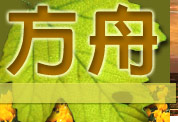A
B
C
D
E
F
G
H
I
J
K
L
M
N
O
P
Q
R
S
T
U
V
W
X
Y
Z
WRITING
The art of writing must have been known in the time of the early Pharaohs. Moses is commanded "to write for a memorial in a book" (Exo 17:14) a record of the attack of Amalek. Frequent mention is afterwards made of writing (28:11, 28: 21, 29, 36;31:18;32:15, 32: 16;34:1, 34: 28;39:6, 39: 14, 30). The origin of this art is unknown, but there is reason to conclude that in the age of Moses it was well known. The inspired books of Moses are the most ancient extant writings, although there are written monuments as old as about B.C. 2000. The words expressive of "writing," "book," and "ink," are common to all the branches or dialects of the Semitic language, and hence it has been concluded that this art must have been known to the earliest Semites before they separated into their various tribes, and nations, and families. "The Old Testament and the discoveries of Oriental archaeology alike tell us that the age of the Exodus was throughout the world of Western Asia an age of literature and books, of readers and writers, and that the cities of Palestine were stored with the contemporaneous records of past events inscribed on imperishable clay. They further tell us that the kinsfolk and neighbours of the Israelites were already acquainted with alphabetic writing, that the wanderers in the desert and the tribes of Edom were in contact with the cultured scribes and traders of Ma'in [Southern Arabia], and that the 'house of bondage' from which Israel had escaped was a land where the art of writing was blazoned not only on the temples of the gods, but also on the dwellings of the rich and powerful.", Sayce. (See DEBIR; PHOENICIA.) The "Book of the Dead" was a collection of prayers and formulae, by the use of which the souls of the dead were supposed to attain to rest and peace in the next world. It was composed at various periods from the earliest time to the Persian conquest. It affords an interesting glimpse into the religious life and system of belief among the ancient Egyptians. We learn from it that they believed in the existence of one Supreme Being, the immortality of the soul, judgement after death, and the resurrection of the body. It shows, too, a high state of literary activity in Egypt in the time of Moses. It refers to extensive libraries then existing. That of Ramessium, in Thebes, e.g., built by Rameses II., contained 20,000 books. When the Hebrews entered Canaan it is evident that the art of writing was known to the original inhabitants, as appears, e.g., from the name of the city Debir having been at first Kirjath-sepher, i.e., the "city of the book," or the "book town" (Josh. 10:38;15:15; Judg. 1:11). The first mention of letter-writing is in the time of David (2-Sam 11:14, 2-Sam 11: 15). Letters are afterwards frequently spoken of (1-Kings 21:8, 1-Kings 21: 9, 11; 2-Kings 10:1, 2-Kings 10: 3, 6, 7;19:14; 2-Chr 21:12;30:1, 30: 6-9, etc.).
|




